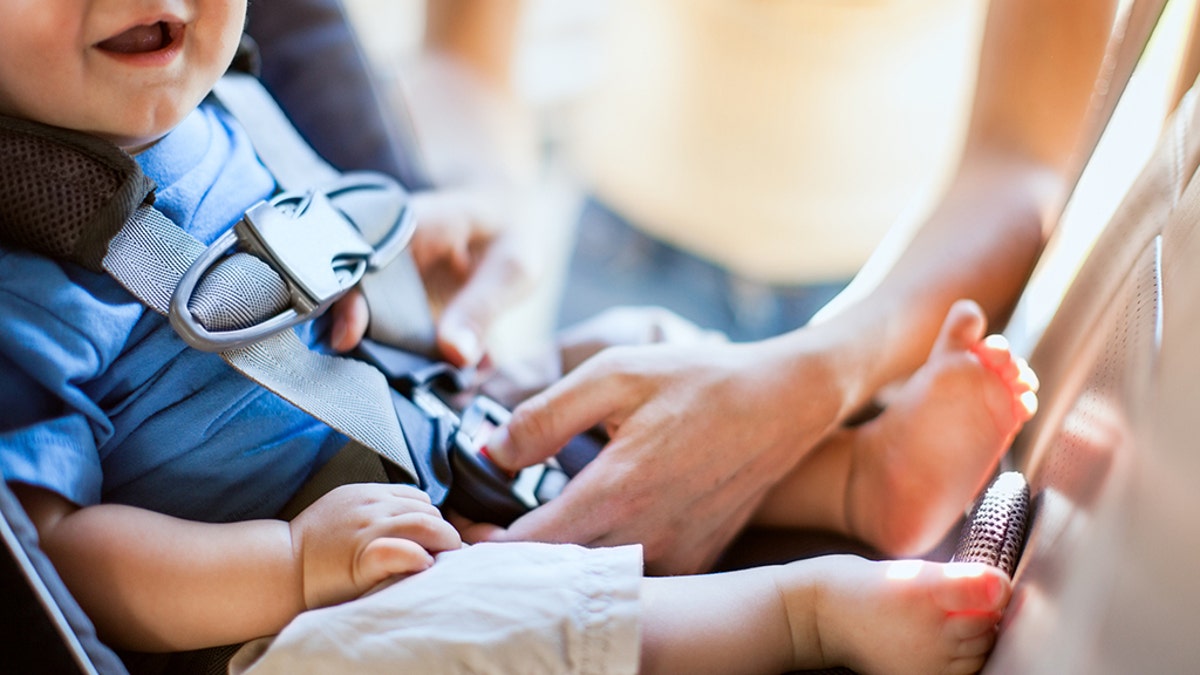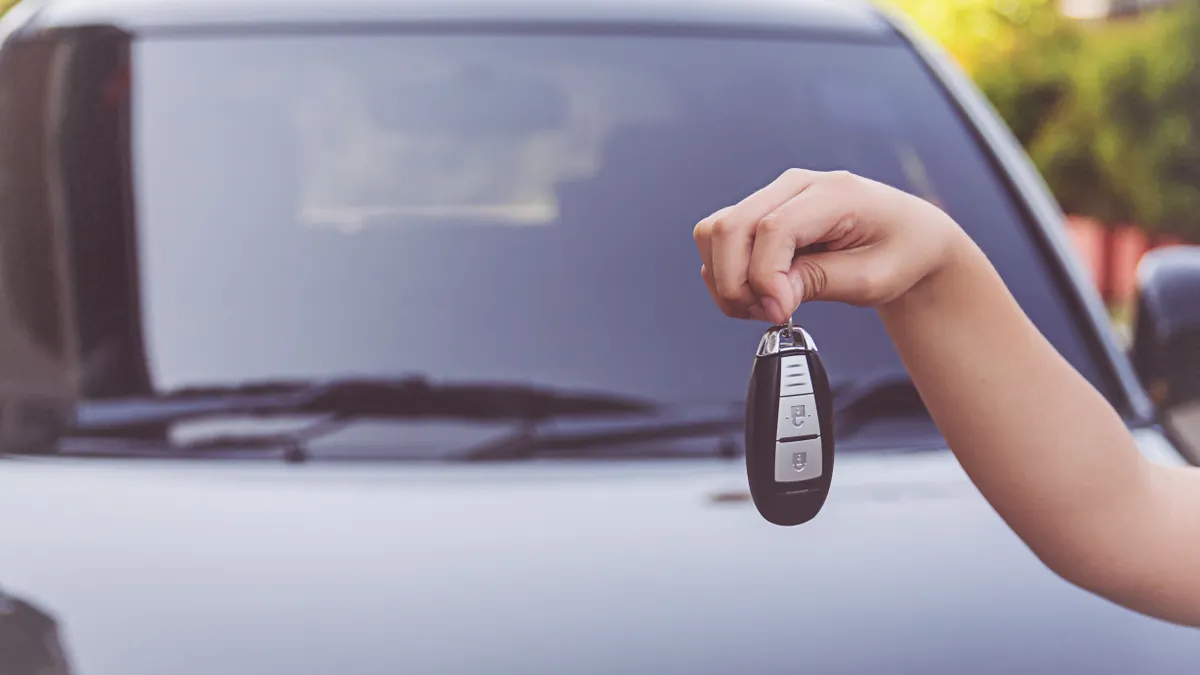What parents need to know to prevent hot car deaths
The "Hot Cars Act" would require auto makers to include a rear seat reminder technology that could save lives.
Police in Pennsylvania are investigating the death of an infant child who was found unresponsive in a hot car on Thursday, June 16, officials confirmed to Fox News Digital.
In the early evening hours, officers were called to the scene in the 300 block of Fort Couch Road in Upper St. Clair, Penn., where paramedics attempted life-saving measures on the 3-month-old baby boy, Lieutenant Venerando Costa with Allegheny County Police's Homicide Unit told Fox News Digital in an email.
"Investigators determined the infant was left unattended inside the father’s Toyota Sienna minivan," Costa wrote. "Detectives are working to confirm the timeline of events through surveillance video in the area. They are also downloading and reviewing data from the vehicle’s on board computer."
CHILDREN WHO PLAY TEAM SPORTS TEND TO HAVE BETTER MENTAL HEALTH OUTCOMES THAN KIDS WHO DON'T: STUDY
The Upper St. Clair Police Department requested investigative assistance from Allegheny County Police after the child was found. The homicide unit is now working with the Allegheny County District Attorney’s Office and the Medical Examiner’s Office, according to Costa.

A 3-month-old baby boy, not pictured, was found dead inside a hot car in Upper St. Clair, Penn., on June 16, 2022, police confirmed to Fox News Digital. (iStock)
No arrests have been made in connection with the case.
"When the Medical Examiner’s Office determines the cause and manner of death a charging decision will be made," Costa added. "We will have no further information for media release until a charging decision has been made by the District Attorney’s Office."
The temperatures in Upper St. Clair reached a high of roughly 87 degrees by Thursday evening, Google search results revealed.
"Unfortunately, this is yet another example of why it is extremely important to have effective occupant detection technology as standard equipment in all vehicles as quickly as possible," Janette Fennell, founder and president of Kids and Car Safety, said in a statement shared on Friday with Fox News Digital.
MOTHER OF CHILD KILLED AFTER VISITING ICE CREAM TRUCK SPEAKS OUT AS SHE FIGHTS TO PASS SAFETY LAWS
"Every day that we delay in advancing these cost-effective detection technologies means children are needlessly at risk of dying," she added.
This is the 5th child to die in a hot car in America this year, according to data tracked by Kids and Car Safety.
"An occupant detection and alert system could have gotten assistance to this sweet angel before it was too late."
This is the 5th child to die in a hot car in America this year, according to data tracked by Kids and Car Safety. The group is a national nonprofit working to prevent injuries and deaths of children in and around motor vehicles.
The organization reports an average of 38 hot car deaths per year (one every 9 days).
Child hot car deaths vary by circumstance. From 1990 to 2021, 56% of children who died in a hot car-related incident were unknowingly left in a vehicle.
Children sometimes gain access to vehicles on their own (26%) — and become trapped. In very few cases the circumstances are unknown (3%), while in 15% of cases children were knowingly left in the vehicle, according to data reported by Kids and Cars Safety in February 2022.
PRESS RELEASE: Members of Congress, @KidsAndCars, @SafeRoadsNow, a memory science expert & families affected by hot car deaths urge @USDOT/@SecretaryPete to quickly advance the child protection "hot cars" provision in the Infra. Investment and Jobs Act. https://t.co/gtPaEk2kcU
— Advocates (@SafeRoadsNow) April 28, 2022
In November 2021, Congress passed the Infrastructure Investment and Jobs Act; President Biden signed it into law. It includes a provision that addresses hot car tragedies by requiring an audio and visual reminder alert to check the back seat in new passenger vehicles.
It does not specify the requirement for the system to detect that a child is alone in a car, according to a release from Kids and Cars that was shared with Fox News Digital.

An average of 38 hot car deaths occur per year in the U.S., according to Kids and Car Safety, which works to prevent hot car tragedies through education and new safety laws. Seen in this photo is a baby buckled up in a car seat. (iStock)
On April 28, 2022, Kids and Car Safety, Advocates for Highway and Auto Safety, families affected by hot car deaths and members of Congress met to stress the importance of effective hot car technology.
POLICE WARN PARENTS AGAINST BACK-TO-SCHOOL PHOTO TREND
The groups urged U.S. Department of Transportation Secretary Pete Buttigieg to advance the child protection "hot cars" provision in the Infrastructure Investment and Jobs Act (IIJA, Pub. Law 117-58), according to an announcement made by Kids and Car Safety on April 28 — the same day the groups came together.
How parents and caregivers can protect children
The National Highway Traffic Safety Administration advises locking car doors and trunks year-round, so that children can’t get inside.
"If you see a child alone in a locked car, get them out immediately and call 911," the agency states on its website.
"A child in distress due to heat should be removed from the vehicle as quickly as possible and rapidly cooled."
Here are more tips for parents on how to "create simple habits" to ensure children remain safe, courtesy of Kids and Car Safety.
Make sure your child is never left alone in a car
Place the child’s diaper bag or other item on the front passenger seat as a visual cue that the child is with you.
Make it a habit of opening the back door every time you park to ensure no one is left behind. To enforce this habit, place an item that you can’t start your day without in the back seat (employee badge, laptop, phone, handbag, etc.).
Ask your childcare provider to call you right away if your child hasn’t arrived as scheduled.
Clearly announce and confirm who is getting each child out of the vehicle. Miscommunication can lead to thinking someone else removed the child from the car.

Parents should always communicate with each other and with daycare facilities to ensure their child was not forgotten inside a vehicle and was dropped off at the appropriate place at the appropriate time. (iStock)
Make sure children cannot get into a parked car
Keep vehicles locked at all times, especially in a garage or driveway. Ask your neighbors and visitors to do the same.
Never leave car keys within reach of children.
Use childproofing knob covers and door alarms to prevent children from exiting your home unnoticed.

Kids and Cars Safety suggests keeping car keys out of reach from children, who can dangerously climb into a vehicle and become trapped. (iStock)
Teach children to honk the horn or turn on hazard lights if they become stuck inside a car.
If a child is missing, immediately check the inside, floorboards and trunk of all vehicles in the area carefully, even if they’re locked.
For more resources including information on occupant detection technology, and tips on what to do if a child becomes trapped or what to do if you see a child alone in a car, visit kidsandcars.org.


